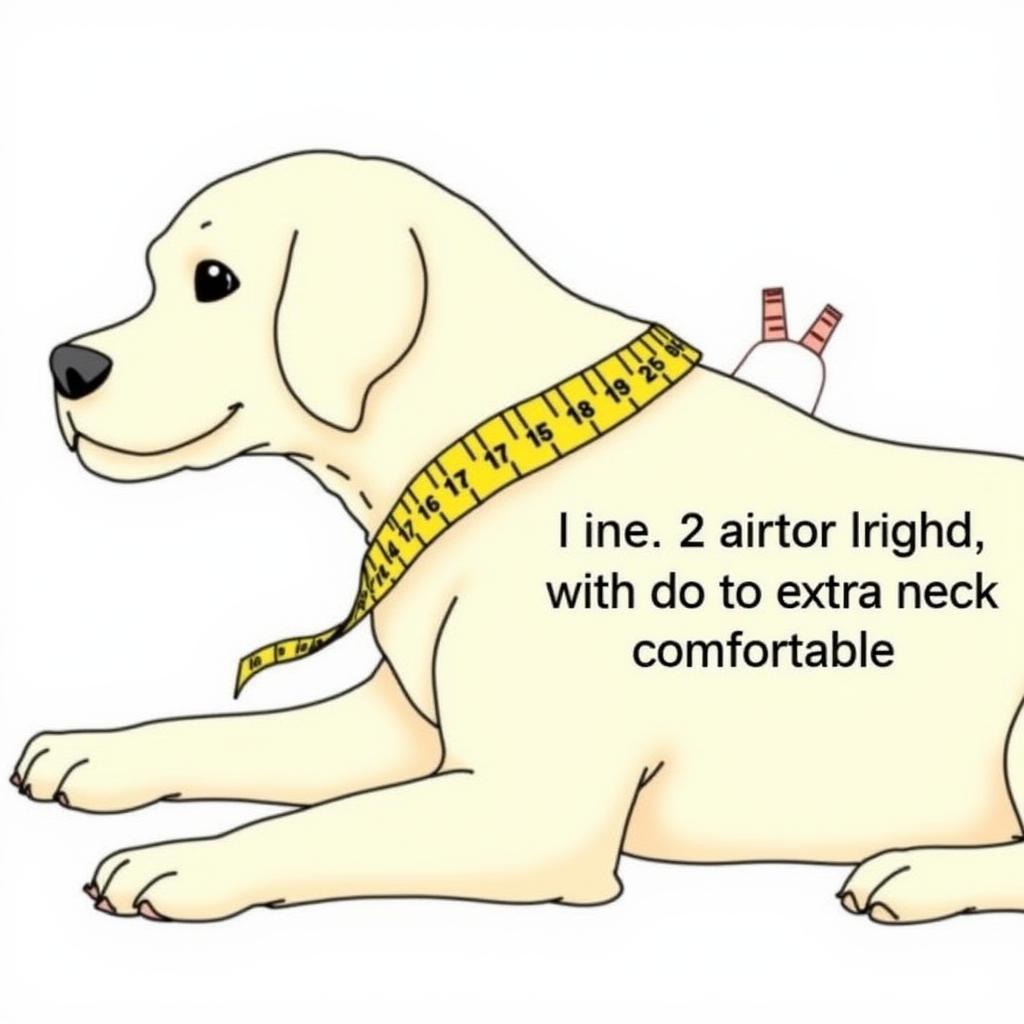Choosing the right collar for your extra small dog is about more than just finding something cute; it’s about ensuring their safety and comfort. But with so many options available, it can be tough to know where to start. This comprehensive guide will walk you through everything you need to consider when selecting the ideal extra small dog collar for your furry friend.
Understanding Your Extra Small Dog’s Needs
Before diving into the world of collars, take a moment to consider your dog’s specific needs:
- Breed and Size: Even within the “extra small” category, neck sizes can vary. Measure your dog’s neck circumference accurately to ensure a snug but comfortable fit.
- Lifestyle: An active pup will need a durable collar that can withstand their adventures, while a more laid-back companion might prefer something lightweight and less bulky.
- Sensitivity: Does your dog have sensitive skin? Opt for collars made from soft, hypoallergenic materials to prevent irritation.
Types of Extra Small Dog Collars
From classic styles to innovative designs, the variety of extra small dog collars can be overwhelming. Here’s a breakdown of the most popular types:
1. Flat Collars: A Timeless Choice
Flat collars are the most traditional type of dog collar. They’re usually made from nylon or leather and feature a buckle or clip closure.
Pros:
- Affordable and widely available
- Come in various colors and designs
- Durable options suitable for everyday wear
Cons:
- Can be uncomfortable for dogs prone to pulling
- Might not be suitable for dogs with short fur, as they can cause matting
2. Breakaway Collars: Prioritizing Safety First
Breakaway collars are designed with a safety mechanism that automatically releases under pressure. This feature is crucial for small dogs who love to explore, preventing them from getting caught and potentially injured.
Pros:
- Essential for dogs who might get their collars snagged
- Offer peace of mind for owners
- Available in a range of materials and styles
Cons:
- Can sometimes unclip unintentionally during play
- Might need frequent replacements depending on the dog’s activity level
3. Harnesses: Distributing Pressure Evenly
While not technically collars, harnesses are an excellent alternative for extra small dogs, especially those prone to tracheal collapse. Harnesses distribute pressure evenly across the chest, reducing strain on the neck.
Pros:
- Provide greater control over strong pullers
- Reduce the risk of neck injuries
- Available in various styles for different needs
Cons:
- Can be bulky for some small dogs
- Might take some time for your dog to get used to wearing
Essential Features to Look For
When choosing an extra small dog collar, keep these key features in mind:
- Material: Opt for soft, breathable materials like nylon, leather, or neoprene. Avoid rough fabrics that could irritate your dog’s skin.
- Size Adjustability: Ensure the collar has multiple adjustment points to ensure a secure and comfortable fit as your puppy grows.
- Buckle or Clip: Choose a secure buckle or clip that’s easy for you to open and close but difficult for your dog to accidentally release.
- D-Ring: A sturdy D-ring is essential for attaching your dog’s ID tag and leash.
- Reflective Elements: Collars with reflective stitching or strips increase visibility during nighttime walks, enhancing safety.
Measuring Your Dog for the Perfect Fit
Getting the right fit is crucial for your dog’s comfort and safety. To measure your dog’s neck for a collar:
- Use a flexible measuring tape.
- Wrap the tape around the widest part of your dog’s neck, where the collar would naturally sit.
- Ensure you can comfortably fit two fingers between the tape and your dog’s neck.
- Use the measurement as a guide when selecting a collar size, but always refer to the manufacturer’s sizing chart for the most accurate fit.
Tips for Introducing a New Collar
Introducing a new collar should be a positive experience for your furry friend. Here are some helpful tips:
- Start Slowly: Let your dog sniff and investigate the new collar before attempting to put it on.
- Use Positive Reinforcement: Reward your dog with treats and praise when they allow you to put on the collar.
- Keep Initial Sessions Short: Gradually increase the amount of time your dog wears the collar each day.
- Monitor for Discomfort: Check for any signs of rubbing, chafing, or discomfort and adjust the fit or material accordingly.
 Measuring Extra Small Dog's Neck for a Collar
Measuring Extra Small Dog's Neck for a Collar
Extra Small Dog Collar: FAQs
Q: How often should I replace my extra small dog’s collar?
A: It’s recommended to replace your dog’s collar every 6-12 months or sooner if it shows signs of wear and tear like fraying, cracks, or a loose buckle.
Q: Can I personalize my extra small dog’s collar?
A: Absolutely! Many pet stores offer engraving services where you can add your dog’s name and your contact information directly onto the collar. You can also find personalized collar tags or charms.
Q: What if I can’t find an extra small dog collar that fits?
A: Some brands specialize in extra small sizes, or you can explore custom-made options. Contact specialized pet boutiques or online retailers for more personalized choices.
Beaut Dogs: Your Partner in Responsible Pet Ownership
Finding the perfect extra small dog collar is just one step in providing the best care for your tiny companion. For more expert advice on all aspects of dog ownership, from breed-specific information to training tips, visit Beaut Dogs at https://beautdogs.com. We’re dedicated to providing you with reliable and informative content to help you navigate the joys and responsibilities of sharing your life with a beloved dog. When in doubt, reach out to our team at [email protected] for detailed and accurate answers to all your dog-related questions.